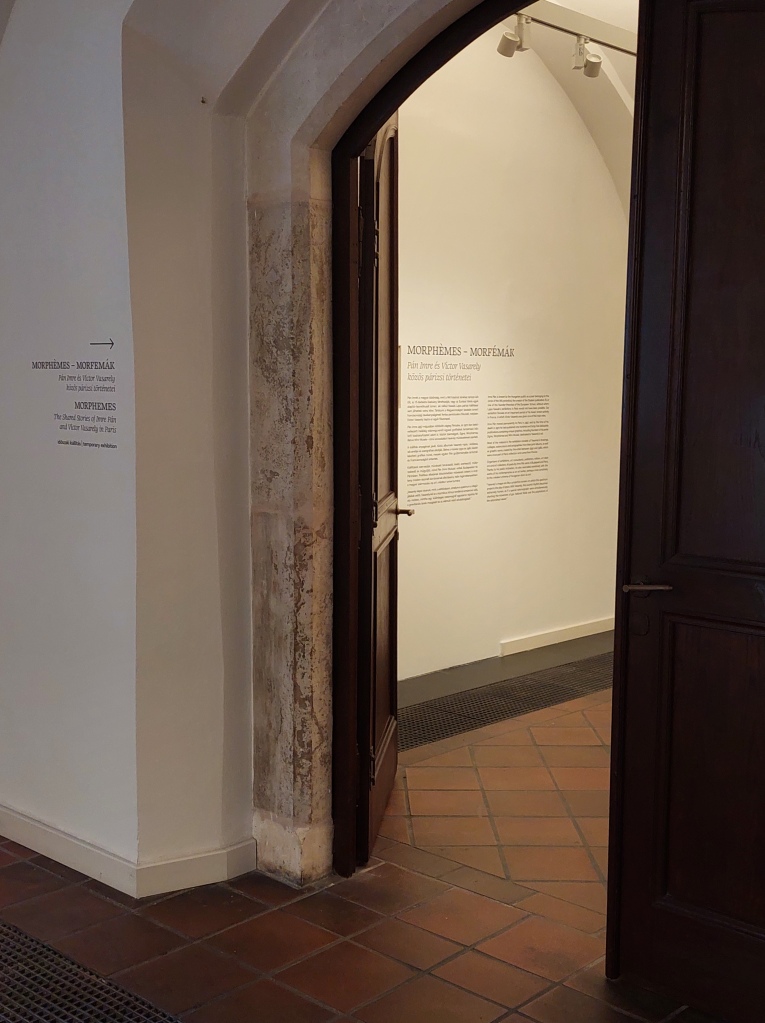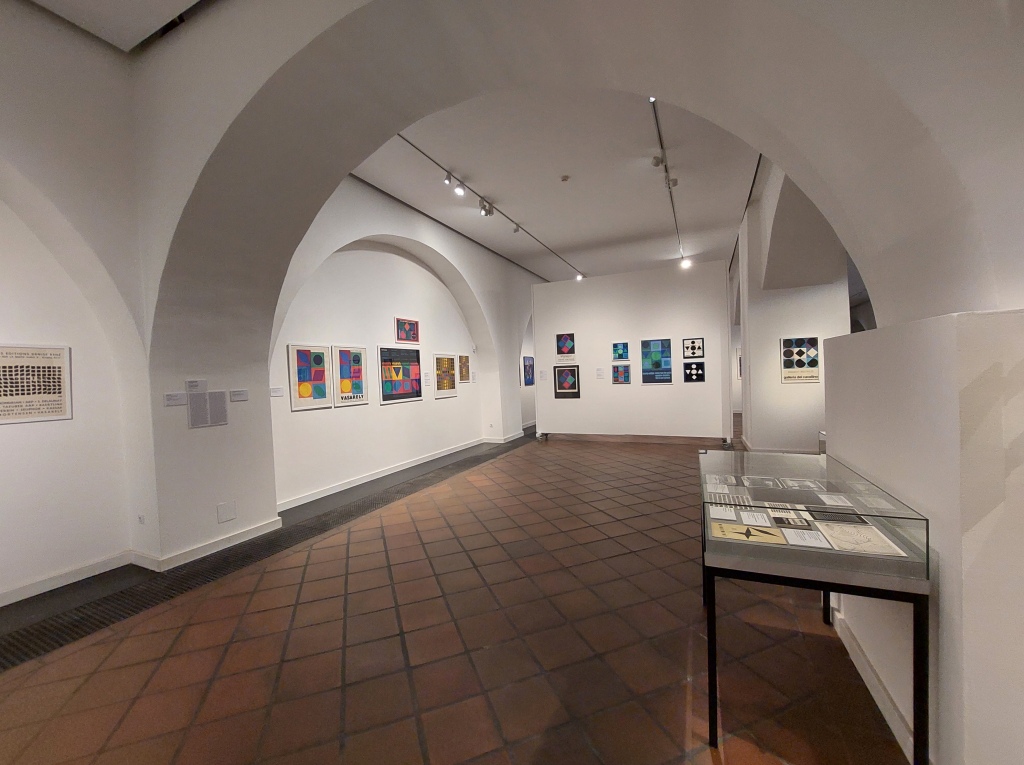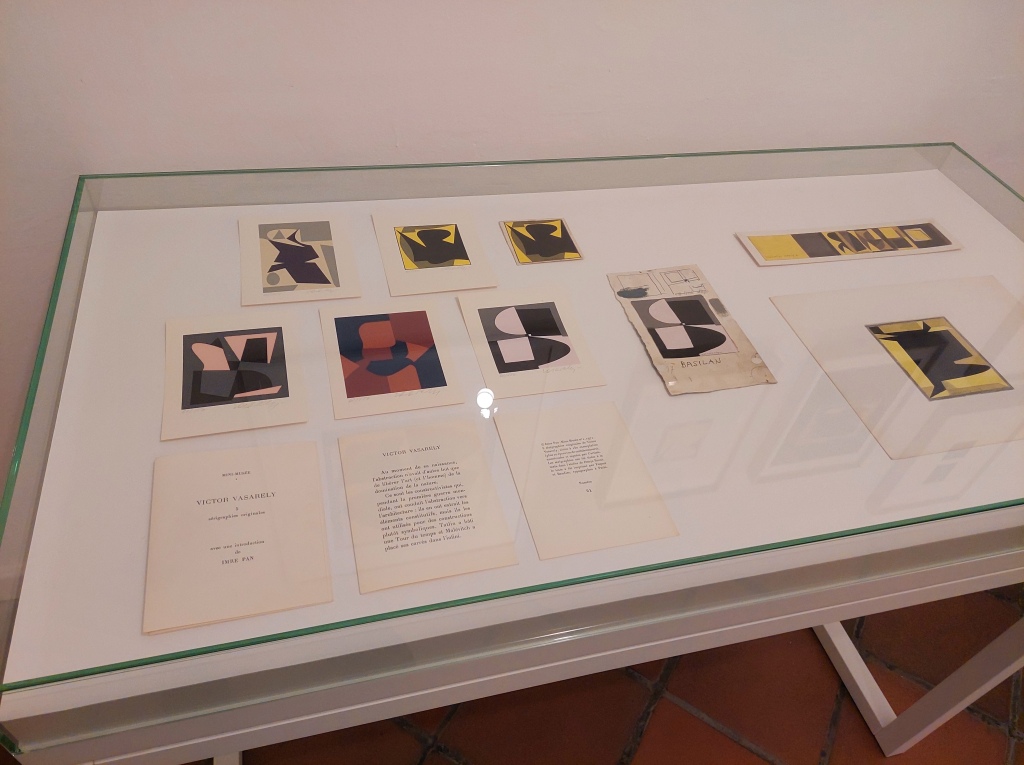Networks in the Paris art scene reflected in Imre Pán’s activity (3.)

Victor Vasarely’s style grew out of his cooperation with Sándor Bortnyik, a painter whose early activity was defined by his interest in avant-garde art promoted in Hungary by Lajos Kassák. Later on, Vasarely became internationally successful through his op art works based on optical illusions, being considered one of the leading figures of the current.

Most of the material in the Morphèmes – The Shared Stories of Imre Pan and Victor Vasarely in Paris exhibition from Budapest consisted of Vasarely’s drawings, collages, watercolours and serigraphies from albums published in cooperation by Imre Pán and Victor Vasarely. Graphic works and sketches created by Vasarely between 1930 and 1960 were also on display, coming from Pán’s private collection. As their correspondence shows, they began their cooperation in connection with the organization of Lajos Kassák’s first exhibition in Paris, in September 1959.[1]

In the material of the exhibition on display at the Vasarely Museum, some connecting elements between abstraction and Surrealism became clear. Both types of art can intersect in the sensibility of the viewer. From Pán’s texts written about Vasarely’s works we can clearly feel that he resonated with the works of abstract art, although describing them in an analogy with Surrealist artworks: “Vasarely’s images are like a projection screen on which the spectrum projects the play of space. With Vasarely, this cosmic rhythm becomes extremely human, as if a special seismograph were simultaneously charting the movement of gravitational fields and the palpitations of the astonished viewer.”[2]

17 of the 150 bibliophile booklets published by Pán during his Paris years were dedicated to the works of Vasarely.[3] For both Vasarely and Pán, the 1960s were quite important and successful in their careers. These years meant for them a period full of opportunities, and also a period when some ideas of the interwar avant-garde resurfaced.

As Veronika Pócs comments, “Pán’s Vasarely albums titled Signe, Morphèmes and Mini-Musée included three texts, two under the title “Victor Vasarely” and one under “Vasarely et le constructivisme.” The latter’s main thesis about Vasarely’s art is that it is a continuation of the ideals of constructivism. Pán outlines a brief history of the movement, tracing it from the beginnings of abstraction to the totally non-figurative image, with a conceptual throughline from Cézanne’s art to Malevich’s suprematism. At the end of this sequence, he names Victor Vasarely as the constructivist of the present, who takes the utopian designs of Tatlin, Pevsner or El Lissitzky further and, with his theories of “Planetary Folklore” and the “Colourful City”, realises universalism through a universally comprehensible and applicable formal system of geometric abstraction.”[4] As we can clearly see, Pán connects the different periods of his activity through these ideas. This time, he returns to a phase that was previous in his activity to his involvement with Surrealism. Pán could not deny Kassák’s influence on his views, and tried throughout his career to synthesize different currents of the avant-garde.
As a final thesis, we may conclude that the Vasarely exhibition reasserts the importance of small formats, and, in addition, the freedom reflected in the medium of graphic works as opposed to paintings. Drawings, collages, sketches meant for Pán possibilities to engage with the dynamism of artistic creativity. This concept was quite close to the initial Surrealist idea of automatism. As Veronika Pócs quotes him, a graphic work seemed to be for him “a draft in which the first motion of the unbridled, the first moments of unfolding begins, in a freer, lighter way”. Through these, and especially through small format works we can identify a particularly intense version of essential formative elements, and the strengths of the artist’s individual style.[5]
The exhibition at the Vasarely Museum showed that for Pán, reconnecting to his previous activities during his Paris years did not take exclusivist directions. Abstraction and Surrealism went side by side in his publications, proving that the ideas that initially materialized in the activity of the European School became unexpectedly relevant in the context of the 1960s, when Surrealism itself went through important transformations.

Balázs Imre József
Morphèmes – Morphemes. The Shared Stories of Imre Pan and Victor Vasarely in Paris, Vasarely Museum, Budapest, curator: Veronika Pócs, 9 February – April 28, 2024.
[1] Morphèmes – Morfémák. Pán Imre és Victor Vasarely közös párizsi történetei, exhibition catalogue, ed., written by Veronika Pócs, Budapest: Vasarely Múzeum, 2024, 32.
[2] Ibid., 33.
[3] Ibid., 32.
[4] Ibid., 33.
[5] Ibid.
